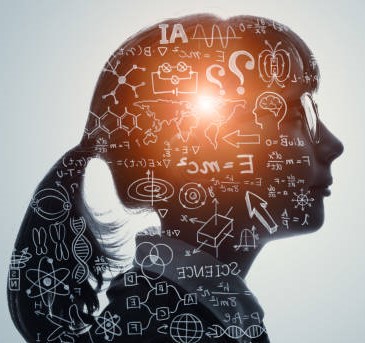Introduction
Imagine a classroom where every student gets a personalized learning plan, tailored to their strengths, weaknesses, interests, and goals. Where teachers can monitor each student’s progress, provide instant feedback, and adjust their teaching strategies accordingly. Where learning is fun, engaging, and interactive, thanks to the use of games, simulations, and virtual reality. This is not a fantasy, but a reality that is made possible by artificial intelligence (AI). AI is a technology that gives machines, applications, and devices the ability to think and act on their own, based on data and algorithms. In this article, we will explore how AI can enhance learning and teaching in various ways, and what are some of the challenges and risks that we need to be aware of.
The Benefits of AI for Learning and Teaching
Artificial intelligence (AI) is a technology that gives machines, applications, and devices the ability to think and act on their own, based on data and algorithms. AI is changing not only the way we work, communicate, and entertain ourselves, but also the way we learn and teach. AI can offer many benefits for learning and teaching, such as personalized learning, adaptive assessment, improved feedback, enhanced engagement, reduced administrative tasks, and more. In this article, we will explore how AI can improve the quality and effectiveness of education for both students and teachers, as well as some of the challenges and risks that need to be addressed.
Personalized Learning
One of the main benefits of AI for learning and teaching is that it can enable personalized learning, which means that each student can learn at their own pace, level, style, and interest. AI can gather and analyze data from various sources, such as student profiles, learning histories, assessments, feedback, preferences, and goals, and use it to create a customized and dynamic learning pathway for each student. AI can also provide personalized recommendations, suggestions, resources, and support to help students achieve their learning objectives and overcome their difficulties. Personalized learning can increase student motivation, engagement, retention, and performance, as well as reduce dropout rates and learning gaps.
Adaptive Assessment
Another benefit of AI for learning and teaching is that it can provide adaptive assessment, which means that each student can be evaluated according to their progress and needs. AI can design and deliver assessments that are tailored to the student’s level of knowledge, skills, and competencies, and that can adjust in difficulty and complexity as the student progresses. AI can also provide immediate and constructive feedback, as well as insights and analytics, to help students and teachers monitor and improve their learning and teaching outcomes. Adaptive assessment can enhance student learning, confidence, and satisfaction, as well as teacher evaluation, diagnosis, and intervention.
Improved Feedback
A third benefit of AI for learning and teaching is that it can improve the quality and timeliness of feedback, which is essential for effective learning and teaching. AI can provide feedback that is specific, actionable, relevant, and timely, as well as personalized and adaptive, to help students and teachers identify their strengths and weaknesses, and improve their performance and practice. AI can also provide feedback that is interactive and engaging, such as through games, simulations, virtual reality, and chatbots, to stimulate student curiosity, creativity, and collaboration. Improved feedback can foster student self-regulation, metacognition, and reflection, as well as teacher professional development and innovation.
Enhanced Engagement
A fourth benefit of AI for learning and teaching is that it can enhance the engagement and interest of students and teachers, which is crucial for successful learning and teaching. AI can provide learning and teaching experiences that are fun, immersive, interactive, and meaningful, such as through gamification, storytelling, personalization, and socialization, to capture and sustain the attention and motivation of students and teachers. AI can also provide learning and teaching experiences that are relevant, authentic, contextualized, and problem-based, such as through real-world scenarios, challenges, and projects, to connect and apply the learning and teaching to the students’ and teachers’ lives and goals. Enhanced engagement can boost student enjoyment, participation, and achievement, as well as teacher satisfaction, retention, and recognition.
Reduced Administrative Tasks
A fifth benefit of AI for learning and teaching is that it can reduce the administrative tasks and workload of students and teachers, which can often be tedious, time-consuming, and stressful. AI can automate and streamline various tasks, such as grading, attendance, scheduling, reporting, data entry, communication, and documentation, to save time and effort for students and teachers. AI can also assist and support students and teachers with various tasks, such as research, analysis, synthesis, presentation, collaboration, and decision-making, to enhance their skills and capabilities. Reduced administrative tasks can free up more time and energy for students and teachers to focus on the core aspects of learning and teaching, such as inquiry, exploration, discovery, and creation.
Challenges and Risks
While AI can offer many benefits for learning and teaching, it also poses some challenges and risks that need to be considered and addressed. Some of the challenges and risks are:
- Ethical issues: AI can raise ethical issues, such as privacy, security, bias, fairness, transparency, accountability, and responsibility, that can affect the rights and interests of students and teachers. For example, how can we protect the personal data and identity of students and teachers from misuse or abuse by AI systems or third parties? How can we ensure that AI systems are fair and unbiased in their decisions and recommendations, and do not discriminate or exclude any groups or individuals? How can we make AI systems transparent and explainable, and hold them accountable and responsible for their actions and outcomes?
- Pedagogical issues: AI can also raise pedagogical issues, such as quality, validity, reliability, effectiveness, and impact, that can affect the learning and teaching processes and outcomes. For example, how can we ensure that AI systems are aligned with the learning and teaching objectives, standards, and curricula and that they provide accurate, relevant, and reliable information and feedback? How can we measure and evaluate the effectiveness and impact of AI systems on the learning and teaching outcomes and experiences, and on the cognitive, social, and emotional development of students and teachers? How can we balance the role and influence of AI systems and human teachers, and ensure that they complement and support each other, rather than replace or undermine each other?
- Societal issues: AI can also raise societal issues, such as access, equity, inclusion, and diversity, that can affect the opportunities and challenges of students and teachers. For example, how can we ensure that AI systems are accessible and affordable to all students and teachers, regardless of their location, background, ability, or resources, and that they do not widen the digital divide or create new forms of inequality or exclusion? How can we ensure that AI systems are inclusive and diverse and that they respect and promote the cultural, linguistic, and epistemological diversity of students and teachers, and their values and beliefs? How can we ensure that AI systems are ethical and responsible and contribute to the sustainable development and well-being of students and teachers, society, and the environment?
Thoughts
AI is a powerful and promising technology that can transform the way we learn and teach, and offer many benefits for students and teachers, such as personalized learning, adaptive assessment, improved feedback, enhanced engagement, and reduced administrative tasks. However, AI also brings some challenges and risks that need to be carefully considered and addressed, such as ethical, pedagogical, and societal issues, that can affect the rights and interests, the processes and outcomes, and the opportunities and challenges of students and teachers. Therefore, we need to adopt a holistic and humanistic approach to AI in education, that is based on the principles of human dignity, human rights, and human development, and that aims to empower and enable students and teachers to become active and responsible agents of their learning and teaching, and of their own lives and futures.



